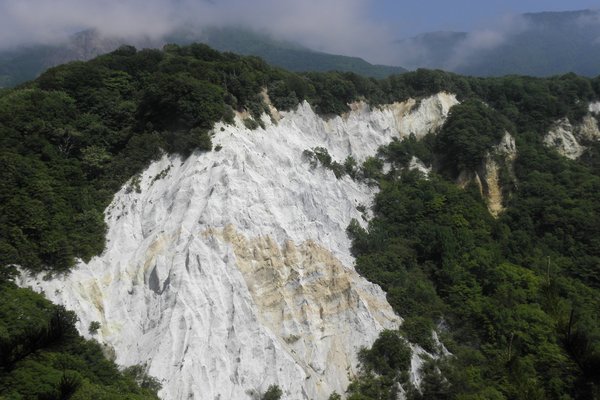Japan
Shirakami-Sanchi
Shirakami-Sanchi is a mountain range covered with a virgin forest of Siebold's beech trees.
It is the remaining stand of a kind of forest that once covered all of North Japan; furthermore, it is a rare undisturbed wilderness in Japan. The landscape features deep valleys with steep slopes and sees heavy snow during the winter months, something against which the beech trees are extremely resistant. The rare Japanese black bear can be found in the forest, as well as the Japanese serow and many species of birds and insects.
Community Perspective: glimpses of this mighty forest can be had from the train that runs along the narrow coastal strip from Fukaura south to Noshiro. There are ample visitor centers in the buffer zone, and most people will make do with a ‘from-the-outside-looking-in’ visit as the core zone requires a permit. Popular places in the buffer zone include Anmon-no-taki Falls and certain trails starting from Juniko.
Site Info
Official Information
- Full Name
- Shirakami-Sanchi (ID: 663)
- Country
- Japan
- Status
-
Inscribed 1993
Site history
History of Shirakami-Sanchi
- 1993: Advisory Body overruled
- IUCN had pleaded for referral, because of integrity issues.
- 1993: Inscribed
- Inscribed
- Type
- Natural
- Criteria
- ix
Links
- UNESCO
- whc.unesco.org
- Official
-
- experience-shirakami.com — Experience Shirakami
- Related
-
- japan.travel — Information on how and when to visit the forest
- japan-guide.com — Japan-Guide: Shirakami-Sanchi (map and transport)
All Links
UNESCO.org
- whc.unesco.org — whc.unesco.org/
Official Website
- experience-shirakami.com — Experience Shirakami
Related Resources
- japan.travel — Information on how and when to visit the forest
- japan-guide.com — Japan-Guide: Shirakami-Sanchi (map and transport)
News Article
- Oct. 1, 2008 yomiuri.co.jp — About 20 beech trees in the Shirakami Mountain range have been found vandalized, apparently with knives.
Community Information
- Community Category
- Natural landscape: Forest
Travel Information
Reservation required
Recent Connections
-
No road access
"As the site has no road or trail acces… -
Named after a Mountain
"is a wilderness area covering one thir… -
Reservation required
Entering the core zone, for example to …
Connections of Shirakami-Sanchi
- Geography
-
-
Sea of Japan
"In the north of Honshu, on the border of Aomori and Akita Prefectures, 15km inland from the Sea of Japan." - AB Document
-
- Ecology
-
-
Bears
Asiatic Black Bear -
Eagles
golden eagle (Aquila chrysaetos japonica), mountain hawk-eagle (Spizaetus nipalensis orientalis) (Official description) -
Beech Forests
Japanese beech or Siebold's beech, native to JapanSee en.wikipedia.org
-
Virgin Forests
the largest remaining virgin beech forest in East Asia (AB ev)
-
- World Heritage Process
-
-
Inscribed on a single criterion only
ix. to be outstanding examples representing significant on-going ecological and biological processes in the evolution and development of terrestrial, fresh water, coastal and marine ecosystems and communities of plants and animals
-
- Human Activity
-
-
Traditional Hunting
Bear Hunting by "Matagi"See www.jal.com
-
- WHS on Other Lists
- Timeline
-
-
Holocene
Having escaped glaciation and established itself over 8,000 years ago...See www.eoearth.org
-
- Visiting conditions
-
-
Reservation required
Entering the core zone, for example to climb Mount Shirakamidake, requires a permit that has to be arranged in advance. -
No road access
"As the site has no road or trail access and thus few visitors..." (AB ev)
-
- WHS Names
-
-
Named after a Mountain
"is a wilderness area covering one third of Shirakami mountain range....the area has an altitude ranging from 100 metres (330 ft) to 1,243 metres (4,078 ft) above sea level....Shirakami-dake is the highest peak in Shirakami-Sanchi.........The peak itself is not a part of the World Heritage Site"
-
News
- yomiuri.co.jp 10/01/2008
- About 20 beech trees in the Shirak…
Recent Visitors
Visitors of Shirakami-Sanchi
- AC
- Adam Hancock
- Alex Goh
- Atila Ege
- Bill Koo
- Casey
- Celina Nanbara
- chenboada
- Els Slots
- Errol Neo
- Fan Yibo
- Frederik Dawson
- GeorgeIng61
- henrik_hannfors
- Iain Jackson
- Joel on the Road
- Jon Bauer
- Kurt Lauer
- Lukasz Palczewski
- M.HATADA
- Nihal Ege
- Patrik
- Petteri
- Randi Thomsen
- Sergio Arjona
- Shandos Cleaver
- Stanislaw Warwas
- Svein Elias
- Tsunami
- Westwards
- Wojciech Fedoruk
- Xiong Wei
- Xiquinho Silva
- Zoë Sheng
Community Reviews
Show full reviews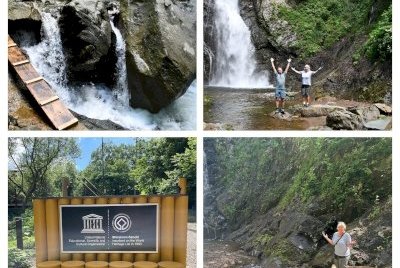
Our first “mainland” Japanese whs in our Japanese quest July '23 was Shirakami-Sanchi. The shinkansen took us from Hokkaido to Aomori Honshu and a local train further on to Hirosaki where we picked up a rental car and then spent the night. The next morning, we drove the 40-50 min to Shirakami-Sanchi Information Centre near Aqua Village Anmon. The map shows that road 28 could take us somehow into the core zone if we just went far enough, but we assumed correctly that driving was impossible. Road 28 has been totally closed since 2020 – probably due to avalanches and broken-down bridges. The remaining option was the hike to Anmon Falls.
At the beginning of the hike there is a nice plaque- For our Anmon Falls hike we passed a kiosk to register, and the guys insisted we needed helmets. It was to protect us from falling rocks. The path, in the beginning was more like a narrow road, but narrowed more along the way. We were at the bottom of a gorge or canyon with steep sides covered in lush green vegetation. The path started along a wide river which in time narrowed as well.
As the path got steeper and narrower – and even slippery with snow on the edges - the river current got stronger and soon we were crossing the small rapids on “homemade transitions”. The first waterfall we met was simply called Waterfall #3. A steep set of stairs took us to Waterfall …
Keep reading 0 comments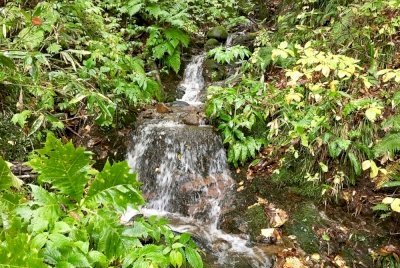
Initially, we hadn't planned to visit Shirakami-Sanchi on our first trip to Japan. But I realised that we had one day of our 14-day JR Pass possibly going to the waste, so I added a few extra bullet train trips to our itinerary. (We definitely got our money's worth from the pass!)
We choose to visit the Aqua Green Village area, with the aim to hike to Anmon Falls. The falls can be reached by public transport and are within the buffer zone (all that you can visit within the permit required for the core).
After visiting the Hiraizumi WHS, we continued north mid-afternoon and spent the night in Hirosaki. (We took the 2:51pm local train from Hiraizumi north to Morioka, the bullet train to Shin-Aomori, then the local train to Hirosaki, arriving at 6:12pm.) We arrived too late to buy bus tickets for the next day, so returned fairly early to the Konan Bus ticket office at the train station the next day, concerned we would miss out. Not that we needed to worry, as the tickets aren't reserved and there was hardly anyone taking the bus on the rainy day. The bus starts from the bus station before stopping at the train station, but the return bus only returns to the train station, so we stored our luggage there. The bus only runs up until the end of October, see the timetable with the infrequent services here: http://www.konanbus.com/travel/shirakami.html.
While doing some last minute research, …
Keep reading 0 comments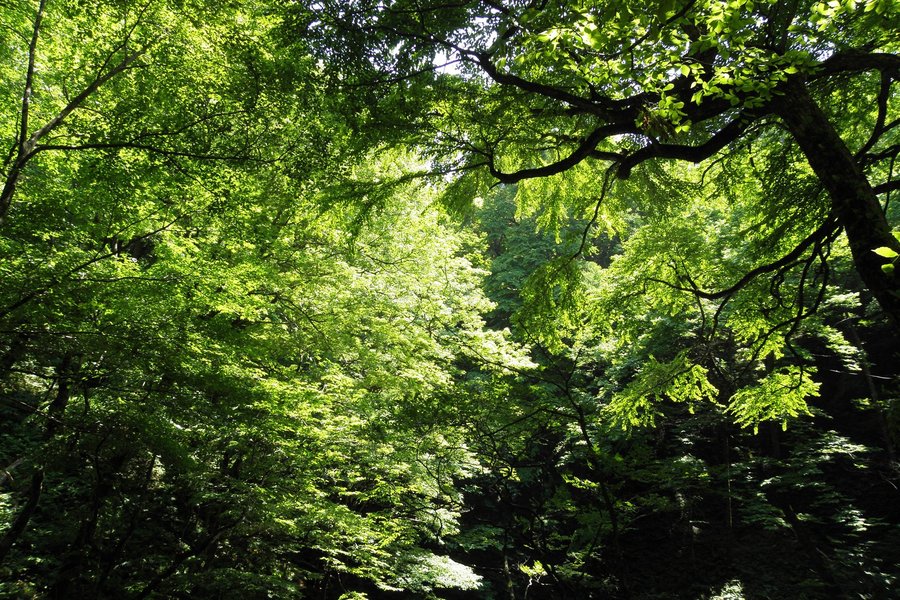
My wife and I made it to the Amon falls in Oct and the foliage was at its best. The beech leaves were in all different hues of red and yellow. The walk along the stream to the falls on a sunny fall day was wonderful. Unfortunately you can only get to the first fall as the second and third falls are blocked from rock slides. There is a sign board and map in Japanese at the beginning of the trail with the UNESCO sign.
To get there we rented a car from Sendai as car rentals in Japan is cheap vs train tickets for two people. The tolls on the other hand were terrible. It cost 7000 yen to drive from Sendai to Hirosaki. You can also see Hurazami along the way.
For non native speakers, GPS is crucial and the way is to program is to punch in telephone numbers. In Hirosaki I went to the city hall and info center to get telephone numbers for Amon village and I was all set. One hour drive from Hirosaki.
Keep reading 0 comments
OK, so I finally made it to Shirakami Mountains in hot-humid early August. I chose to go to the Aqua Green Village area because I can at least enter the buffer zone from there. (I myself don't count in a WHS unless I set my feet within it.) I took a bus from the Hirosaki train station to the village. From the village there are two walking trails: one that goes through beech forest and the other that takes you to three water falls collectively called Anmon no Taki, both of which are in the buffer zone. I combined the two trails and walked on both, which only took me 100 min. It was a nice and rather easy walk. Since I had extra hour at the village, I soaked in a hot spring at the village to cleanse myself off sweat.
I happened to go to Heinrich National Park in Germany just last year, which is also a WHS for its beech trees. Folks at the World Heritage Center at Shirakami told me that the beech trees at Shirakami are supposedly more ancient.
Keep reading 0 comments
I just want to correct what I said below. Although a map I acquired online from the WH center at Shirakami Sanchi clearly shows that the summit of Mt. Shirakami is within the core region of the WHS, I just called the WH center to clarify the matter because I had some doubt. They said that the summit is on the border between the inside and the outside of the core region. What does that mean??? I don't know. They also said that you need a permit to enter the core region.
Keep reading 0 comments
There is one way to enter the core zone of this WHS, and that is to climb Shirakami Dake, or Mt. Shirakami. You can do so from the train station of "Shirakami Dake Tozan Guchi," which means "Entance Point to Mt. Shirakami." This hiking trail is in fact quite popolar among the Japanese. Also, there is no such thing as Shirakami Sanchi National Park. This area is part of Tsugaru Kokutei Kouen, or Tsugaru National Monument.
Keep reading 0 comments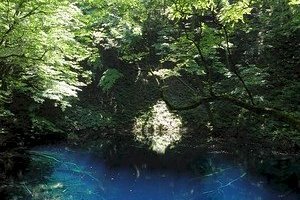
Like all other reviewers so far, I did not get into the core zone of Shirakami. I am looking forward to hearing from anyone who did – even a trip report to the Anmon waterfalls would be fine. It's located in the original buffer zone and presented that way on local maps. The WHC notes of 1993 seem to suggest that Japan put the buffer and core zone into one core area.
To get a feel for the site, I combined a half circle around it on the JR Gono Line with a stop at Juniko.
My train journey started in Hirosaki, just to the north of the Shirakami mountains. From this city, one has the best view of the highest mountain peaks, which even in June are still covered with a lot of snow. I had a reservation on the “Resort Shirakami”, a special train that runs a few times a day during the season. It is quite comfy and has extra large windows so you can enjoy the views. They are not so great however when you want to take photos – there’s a lot of reflection. How I miss the Indian trains, that travel with their doors open and sometimes even don’t have glass in the windows!
For the first hour, we traveled slowly from village to village, still in the civilised world. There’s a live music performance on board with traditional Japanese string instruments. Fortunately, this ends after 15 minutes. After that, the …
Keep reading 0 comments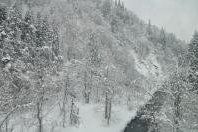
Currently the single natural World Heritage Site in the region of Tohoku or Northern Honshu, Shirakami-Sanchi is the name of the inaccessible beech forest mountain range in western Aomori Prefecture and Northern Akita Prefecture. I used the word 'inaccessible' because the inscription area is almost impossible to enter as there is no road or tourist facility at all, there is only one place that is really in the core zone that opens to public which are the Anmon-no-taki Fall. All the tourist centers and museums which other reviewer mentioned as well as the the Juni-Ko area and its nearby hiking trail to Shirakamidake Peak are also outside the World Heritage Site!
Since I visited the area in March, all the hiking routes as well as the Anmon-no-taki were closed due to heavy snow. I had no choice but have to use the most popular option of all tourists in order to see the mountain, a train. There are two rail lines that can provide a view of Shirakami-Sanchi Range; the first one is the Gono Line with spectacular view of whole range and Japan Sea, the second one is Ou Line with view of beech forest inland valley. I took both lines and found out that while the Gono line was very impressive with Mountain View, the view from Ou Line was very pretty similar to Black Forest in Germany. Since train riding was very time consuming so plan carefully for all connections, also better to buy the food from …
Keep reading 0 comments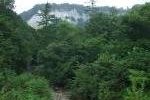
I found the most convenient way of seeing the Shirakami was from the train that runs along the narrow coastal strip from Fukaura south to Noshiro. From its windows I saw the passing panorama of the rocky coastline on one side and the seemingly impenetrable beech clad mountains on the other.
I travelled up and down this line several times, getting off a small stations. One station was called Juniko, and from here I took a bus that travelled inland to the Juniko Lakes area. From here walking tracks led into the Shirakami Sanchi National Park.
Keep reading 0 comments
I really enjoyed my trip to shirakami-sanchi in aomori-ken. it was quite difficult to find information on it, and public transportation is really complicated. but the virgin beech forest is quite spectacular. rent a car because public transport only allows for a very limited time in the forest. i really enjoyed the informative shirakami-sanchi museum (in english and japanese) and the free (something free in japan? yes!) imax movie about the beech trees (in japanese only). but the best thing about the experience was its isolated locale. sure, there were tourists hiking and taking pictures, but it was relaxing and so green. there are many onsen in the area as well.
Keep reading 0 comments
